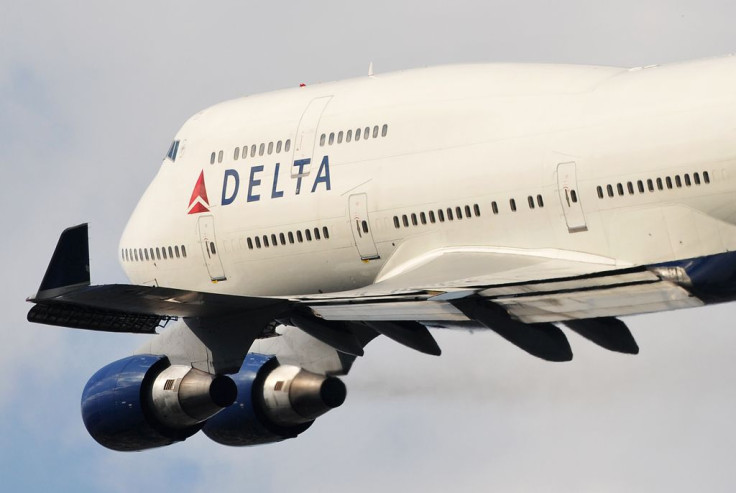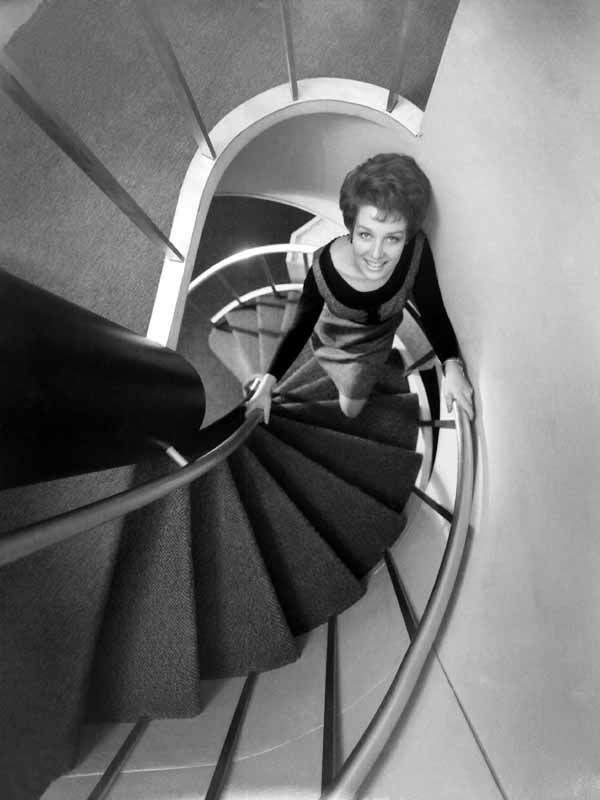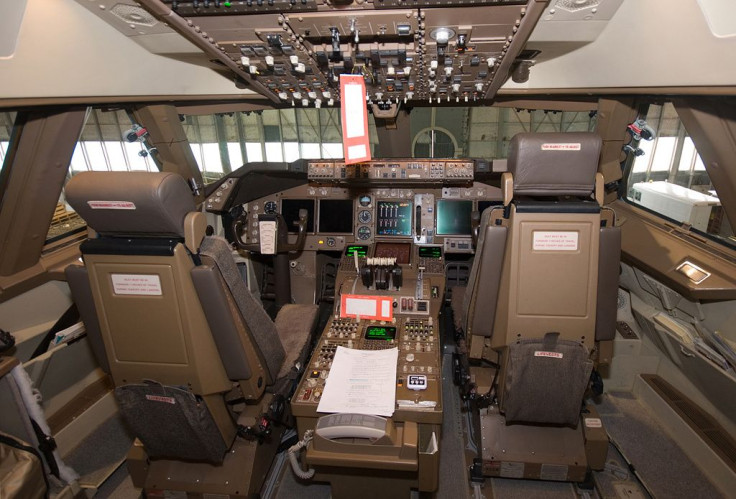Boeing 747 On Deathwatch: How Boeing’s New 777X Will Kill Its Jumbo Jet Predecessor, Once The Queen Of The Skies

This story has been updated to reflect that Gregory Alegi is a current, not former, professor at Luiss University.
Ask any passenger at any airport in the world: “Can you recognize a Boeing 747?” Chances are, even casual flyers will say, “Yes.” With its unmistakable hump and graceful lines, the Jumbo Jet -- so famous it earned its own nickname -- has been a familiar sight around the globe since it first flew in 1969.
It was, for decades, the biggest airplane in the world. It was the star of blockbuster movies, such as “Air Force One” and entries in the “Airport” series. It was the Queen of the Skies, as enthusiasts called it, the flagship of dozens of airlines, on every continent except Antarctica.
All that is about to change.
The Jumbo Jet is no match for a world of high oil prices and new, fuel-efficient airplanes that transport almost as many people, but with a much smaller fuel bill. Ironically, the nail in the coffin may come from the Boeing Co. (NYSE:BA) itself, the outfit that 40 years ago bet the farm, and won hugely, on the success of the 747 -- and now is about to send it into commercial oblivion with its newest product, the 777X.

Chicago-based Boeing (NYSE:BA) has not officially launched the new, stretched version of its 777, but it appears it will do so very soon: Its board may already have given the go-ahead to the company’s sales team to begin offering the new machine to airlines.
“We don’t comment on board meetings, but we are taking the next steps” toward giving the 777X its debut, Boeing representative Doug Alder said. “We made a lot of great progress in our development work, and we began to discuss the additional technical, pricing and schedule details with our customers, and are targeting entry into service at the end of the decade.”
The 777-9X variant would fly 405 passengers as far as 8,100 nautical miles or 15,000 kilometers, according to several reports, which, Boeing representative Karen Crabtree said, “are in the ballpark” of what the new plane would do. The 747’s latest version, the 747-8I (Intercontinental), typically flies about 470 people over the same maximum distance, but with a key difference: It has four engines, not two. And that hurts seat-mile cost, the all-important metric that measures how much fuel it takes to fly one passenger one mile.
So airlines are increasingly choosing the 777, both the current 300ER model seating about 350 people, and the future, slightly larger 9X version. With the Platts jet-fuel price having risen about 211 percent since 2000, according to the International Air Transport Association, the trade organization representing the world’s airlines, the twin-engined 777 is cleaning up. Boeing reported it has logged more than 1,400 orders since its debut in 1995, almost as many as the 747 has in its whole career.
That leaves the 747-8 in the lurch. Boeing has sold only 101 of the planes since it was announced in 2005. And most of these orders were for freighters -- only about one-quarter of them were for the 8I passenger version: The flagship unit of Germany’s Deutsche Lufthansa AG (FRA:LHA) is the sole airline to fly it today.
Boeing has a mere 59 unfilled orders for the jet. At the recently reduced production rate of 1.75 planes per month, the end of the line for the Queen of the Skies will come in less than three years, assuming no new orders come in.

Boeing isn’t really killing the 747, to be sure. In fact, it makes quite clear that it’s here to stay and it’s still being improved. “We are not shifting away any focus on the 747-8,” Boeing representative Joanna Pickup said. The idea is to sell it as a bigger, different machine from the 777X. “They serve different markets. Boeing’s product strategy is to provide customers maximum flexibility for the capacity they want.”
Boeing forecasts about 800 orders over the next 20 years for so-called very large aircraft, which means the 747-8 and the only other game in town, the even bigger but not much more successful A380 from the Airbus unit of Europe’s EADS NV (EPA:EAD): Airbus has booked 262 orders for the A380 since its inception. The Boeing forecast of 800 orders for VLA seems like a lot, but it’s only 6 percent of the total expected size of the commercial airplane market.
“Market forecasts say [Boeing] never valued too much the very large aircraft sector,” said Gregory Alegi, who at Luiss University in Rome is an adjunct professor of history of the Americas in the political science department and teaches aviation management in the business school. “Given the forecasts, they have decided long ago to just update the old 747. It’s a niche market that they want to be in, but one they don’t want to invest in.”
Alegi added, “It’s lucrative niche for sure, thanks to prices” that Boeing notes surpass $350 million per aircraft, but a niche nonetheless.
'Mad Men'-Era Glamour
For the Queen of the Skies, it’s been a great run. The 747 entered commercial service with Pan American in 1970, and Boeing says that Jumbos have flown 3.5 billion people since then, the equivalent of one-half of the world’s population.
For decades, the 747 monopolized the world’s long-range, high-traffic air routes, as well as the imaginations of enthusiasts everywhere.

“It has a magical aura,” said Guillaume de Syon, a history professor at Albright College in Reading, Pa., who specializes in aviation. He got the aviation bug, he recalled, when a Swissair pilot in his native Switzerland gave him a tour of a Jumbo cockpit.
“Swissair bought two 747s, and just went to New York. One was the prestigious United Nations route from Geneva, the other the cash cow from Zurich,” de Syon said. “You could set your clock by when it took off from Geneva with its distinctive rumble. It was a social practice,” one that highlighted the mystique of the giant airplane.
“The bump in the fuselage made it an icon. It was the first wide-body passenger aircraft, which gave this notion of space” and allowed airlines to sell it much like a luxury ship, with posh lounges on the upper deck. “You can see them in museums and it feels very old, very ‘Mad Men,’” de Syon said.
The paradox of the 747 is that, while evoking the bygone era of passengers in suits and fedoras who smoked on airplanes, it also made air travel affordable for the masses. Airlines needed to fill its 400 seats, more than double the jets of the 1960s that it superseded, and often offered sharply discounted ticket prices to do so.
Big, Safe, Forgiving -- And Pretty
“It democratized long-range travel,” said Carlo Galiotto, who flew 747s for Alitalia as both first officer and captain. “Until the 1980s, our traffic was made up of immigrants who came back to visit Italy, or very well-off people. But the 747 made travel possible for people who just wanted to, say, spend four days in New York.”
The Jumbo was also a pilot’s dream, recalled Galiotto, who flew the now-retired 200 series, the last one to feature a bewildering deluge of classic round dials on the flight deck instead of the computer screens in today’s 747s.

“It was like a forgiving father. You could make mistakes. It was so well-built, so massive and with redundant systems, that it would shrug off pilot errors. And if you lost an engine, it didn’t care a bit,” Galiotto said. “Losing an engine on any other plane would have been an emergency. On that one, it was just an anomaly.”
Galiotto added: “Passengers felt safer, too. Despite its great inertia, it felt more stable. It had ample space for cabin personnel, too. Life on board was less neurotic for everybody.”
David Powell, who flew both 747s and 777s for United Continental Holdings' (NYSE:UAL) United Air Lines and is now dean of the Western Michigan University College of Aviation in Kalamazoo, took a diplomatic stance on whether he prefers one or the other. “I’ve got friends on the 777 -- it’s a wonderful airplane,” he said. But the 747’s extra engines make it safer. “If I am flying across the Pacific on a 747 and lose an engine, I’ve got three more. On the 777, that never happened, but they came close.”
Powell said of the 747: “It really was the queen of the fleet. Four engines, a beautiful airplane. The upper deck was unique, and for a pilot it was nice being up there.” He conceded, “But it’s all about the cost.”
A Rare Bird
Back in the day when most flag-carrier airlines were owned by governments and aviation was a matter of national prestige, pilots weren’t the only ones in love with the Queen. To airline-company managers, the 747 was a must-have.
"The airlines had to get them, even if it made no sense economically,” said de Syon, Albright College’s aviation expert. “Small airlines from small countries flew 747s into [New York’s] JFK -- it was an incredible assembly."
Indeed, during the Jumbo Jet’s heyday in the 1970s and 1980s, it was possible to see more than 30 regularly scheduled 747s at New York’s biggest airport. They came from every continent, from Australia’s Qantas Airways to Aer Lingus in Ireland. Now, only about five airlines fly Jumbos to the city.

Still, there’s at least one very prestigious job the humpbacked giant may continue doing for many years: transporting the President of the United States. Since 1990, the U.S. Air Force has used two highly modified 747s as Air Force One, as the planes are called when the commander-in-chief is on board. In Air Force service, they are known as VC-25A, and despite being flown much less than commercial Jumbos, the planes are getting old, and the Pentagon is looking for replacements.
Boeing’s Pickup would not comment on whether the 747-8 is in the running, saying simply, “We are working with the customer to understand the requirements.” But it’s hard to imagine the American president being carried around the world in anything other than the most prestigious American airplane. The Europeans may propose their A380, but it’s a safe bet that the winner would be Boeing’s product.
And for that reason, if nothing else, the last icon of the golden age of American supremacy in the skies may not ever go away completely.

© Copyright IBTimes 2025. All rights reserved.






















